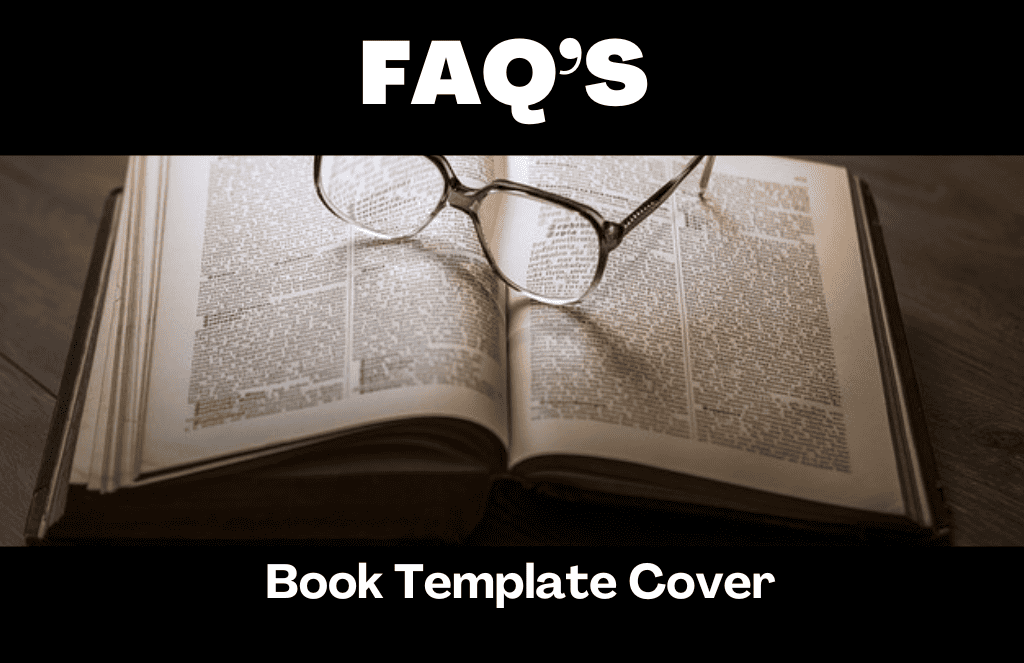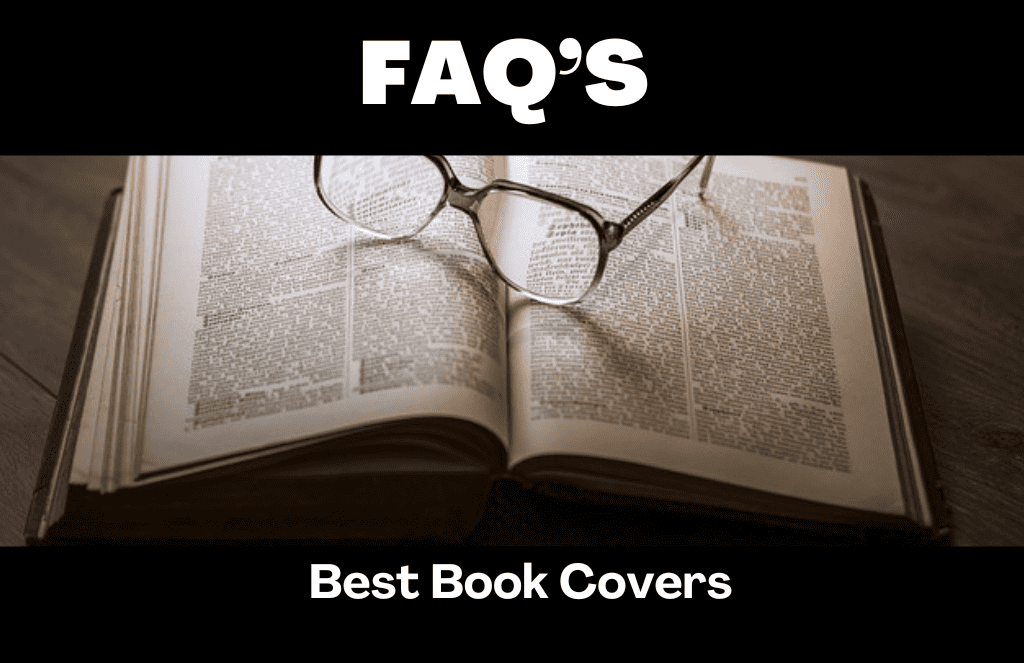Tag Archives for " Best Book Covers "
Book Template Cover

Book Template Cover: Simplify and Elevate Your Book Design
A book template cover is a concise, eye-catching design that showcases the title and author of a book, capturing the essence of its content and attracting potential readers. It serves as a visual representation of the book’s theme and style, playing a crucial role in grabbing attention and generating interest.
The cover design should be unique, memorable, and aligned with the genre and target audience of the book. An effective book template cover is one that effectively communicates the book’s essence, enticing readers to pick it up and delve into its pages.
In today’s competitive publishing landscape, a well-designed book cover can make all the difference in capturing the interest of potential readers. As the saying goes, “Don’t judge a book by its cover” — well, in reality, people do.
A visually appealing and professionally designed book cover can greatly enhance the chances of a book’s success by catching the eye of the browsing reader, conveying the book’s genre and style, and ultimately enticing the reader to delve into its pages.
Therefore, when creating a book template cover, it is vital to consider the target audience, genre, and overall theme of the book to ensure the cover resonates with potential readers and effectively promotes the content within.
How to Choose The Right Book Template Cover?
When it comes to designing the cover for your book, choosing the right template is crucial. The cover is the first thing readers see, and it should not only grab their attention but also convey the essence of your book.
Your Book’s Genre And Target Audience
Understanding your book’s genre and target audience is a crucial step in choosing the right book template cover. Your cover should appeal to your target readers and give them a sense of what to expect from your book. Without understanding your genre and audience, it’s like shooting in the dark.
First, consider your book’s genre. Is it a romance, mystery, self-help, or fantasy novel? Each genre has its own visual cues that can help you narrow down the options. For example, romance novels often feature couples in embrace or close-ups of a woman.
Mysteries tend to have intriguing imagery or clues. Self-help books often have motivational images or symbols related to personal growth.
Next, think about your target audience. Are you writing for young adults, middle-aged professionals, or children? Understanding your audience’s preferences and expectations will help you select a cover that resonates with them.
For instance, if your target audience is young adults, you might opt for a modern and edgy design. On the other hand, if your book is for children, you may want bright colors and playful illustrations.
Evaluating Different Book Template Cover Options
Now that you have a clear understanding of your book’s genre and target audience, it’s time to evaluate different book template cover options. There are a myriad of book templates available, each with its own style and visual elements.
To make the evaluation process easier, create a checklist of criteria that are important to you. Consider aspects such as layout, typography, color scheme, and imagery. Look for templates that align with your genre and audience, while also capturing the essence of your book.
Listed below are some factors to consider while evaluating book template covers:
- Layout: Does the layout convey the mood and genre of your book effectively?
- Typography: Is the font style and size appropriate for your genre? Does it enhance readability?
- Color Scheme: Do the colors used in the template evoke the right emotions and reflect the tone of your book?
- Imagery: Does the template offer the option to add relevant images or illustrations? Are they consistent with your book’s theme?
Remember, the template you choose can be customized later, so don’t worry if it’s not a perfect fit right away. Aim for a template that captures the overall vibe and resonates with your genre and audience.
Customizing The Chosen Template To Fit Your Book’s Theme
Once you’ve selected a book template cover that aligns with your book’s genre and target audience, it’s time to customize it to fit your book’s theme. Customization allows you to add a personal touch and make the cover truly unique.
When customizing the template, consider the following:
Background: Choose a background color or image that complements your book’s theme and sets the right mood.
Title and Author Name: Experiment with different fonts, sizes, and placements to make the title and author name stand out while maintaining readability.
Images/Illustrations: Add relevant images or illustrations that capture the essence of your story or convey important elements.
In conclusion, choosing the right book template cover requires understanding your book’s genre and target audience, evaluating different options, and customizing the chosen template to fit your book’s theme.
Steps To Simplify And Elevate Your Book Design

Creating a captivating and visually appealing book design is essential to attract readers and make a lasting impression.
Crafting A Compelling Title And Subtitle
A well-crafted title and subtitle are crucial elements that can instantly grab the attention of potential readers. Keep these tips in mind when creating your book’s title and subtitle:
- Compose a concise and catchy title that accurately reflects the main theme or message of your book.
- Ensure your subtitle complements the title by providing additional context or a unique selling point.
- Use powerful and descriptive words that evoke curiosity and create intrigue.
Selecting Captivating Imagery Or Illustrations
The right imagery or illustrations can enhance your book’s design and engage readers visually. Here’s how to choose captivating visuals:
- Select images or illustrations that effectively represent the essence of your book.
- Ensure the visuals are high-resolution and visually appealing.
- Consider the emotional impact of the visuals and how they align with your book’s genre and tone.
Applying Typography And Color Schemes Strategically
The strategic use of typography and color schemes can greatly influence the visual impact of your book design. Follow these tips for effective implementation:
Choose fonts that are legible and suitable for your book’s genre and theme.
Consider the overall color scheme of your book cover and ensure it conveys the desired mood or message.
Use contrasting colors to make important elements, such as the title, stand out.
3.4 Incorporating Branding Elements Into The Design
Integrating branding elements into your book design helps establish a cohesive and professional look. Take these steps to incorporate branding effectively:
Include your personal or author logo in a subtle yet prominent position.
Apply consistent fonts, colors, and graphic styles that align with your overall branding strategy.
Ensure the design reflects your author brand and resonates with your target audience.
3.5 Seeking Feedback And Making Necessary Revisions
Receiving feedback and making revisions are critical steps in refining your book design. Follow these suggestions for a successful review process:
- Share your book cover with trusted friends, colleagues, or beta readers.
- Collect honest feedback and consider suggestions for improvement.
- Make necessary revisions to enhance the overall impact and effectiveness of your book design.
Frequently Asked Questions On Book Template Cover

What Are The Key Elements Of A Book Cover Template?
A book cover template should include the title, author name, compelling artwork, and a captivating tagline that reflects the book’s theme.
How Can I Customize A Book Cover Template To Match My Book’s Genre?
You can customize a book cover template by selecting appropriate colors, fonts, images, and graphics that align with your book’s genre, whether it’s romance, thriller, fantasy, or any other genre.
Where Can I Find Book Cover Template Designs?
You can find book cover template designs on various websites, such as Canva, Adobe Spark, or through graphic design platforms like Fiverr or 99designs. You can also hire a professional designer to create a customized book cover template.
Conclusion
A well-designed book cover template is essential for catching the attention of potential readers and making a lasting impression. By following the guidelines provided, you can create a visually appealing and professional-looking cover that effectively represents your book’s content. Remember to prioritize simplicity, readability, and relevance when choosing fonts, colors, and images.
With a thoughtfully designed cover, you can greatly increase the chances of attracting the right audience and driving sales. So, get creative and start designing your perfect book cover today!
ShareBest Book Covers

Best Book Covers: Unveiling the Artistic Masterpieces
The best book covers capture readers’ attention and reflect the essence of the story in a visually engaging way. These covers play a crucial role in attracting potential readers and setting the tone for the book, making it essential for authors and publishers to invest in captivating designs that resonate with the target audience.
Effective book covers create a strong first impression and generate curiosity, ultimately increasing the likelihood of a reader picking up the book and exploring its content further. We will explore the characteristics of the best book covers and why they are integral to the success of a book.
What Is The Importance Of Book Covers?
When it comes to books, judging them by their covers is not only acceptable, it is essential. The book covers play a crucial role in attracting readers and communicating the essence of the content within. In this blog post, we will explore the significance of book covers, focusing on two key aspects: impression and attraction, and representation of content.
Impression And Attraction
A book cover is the first thing that catches a reader’s eye. It acts as a visual hook, drawing potential readers towards the book. A well-designed cover can create an instant impression, sparking curiosity and igniting the desire for exploration. By utilizing effective typography, color schemes, and captivating imagery, book covers create a lasting impact, tempting readers to pick up the book and discover what lies beneath.
- A visually appealing cover can distinguish a book from its competitors, making it stand out on bookstore shelves or in online marketplaces.
- A cover that resonates with its target audience can tap into their emotions and personal interests, instantly grabbing their attention.
- Strong visual elements can create a sense of intrigue, making readers curious about the story and encouraging them to delve deeper.
- A well-crafted cover can build anticipation and excitement, increasing the likelihood of a potential reader making a purchase.
Representation Of Content
Book covers serve as a visual representation of the content inside, offering a glimpse into the author’s world. They provide valuable context and can effectively convey the genre, themes, and overall tone of the book. A carefully crafted cover can communicate the essence of the story and capture the imagination of the reader, becoming a tangible reflection of the author’s vision.
- The choice of color and imagery can hint at the mood and atmosphere of the book.
- Typography and font styles can convey the genre, whether it’s a thrilling mystery or a light-hearted romance.
- Visual symbols and motifs can represent key elements or themes within the story, arousing intrigue and curiosity.
- Overall design elements can communicate the level of sophistication, complexity, or simplicity of the narrative.
A well-designed book cover resonates with readers, building a visual connection that entices them to explore further. It serves as a powerful marketing tool, enticing readers to pick up the book, read the blurb, and eventually make a purchase. Now that we understand the significance of book covers, let’s dive deeper into some of the most captivating book covers that have left an indelible mark on the literary world.
Elements Of A Great Book Cover
A book cover is the first impression a reader gets of your book, and it plays a crucial role in attracting potential readers. A great book cover should be visually captivating, convey the tone and genre of the book, and entice readers to pick it up and explore further.
Eye-catching Designs
Eye-catching designs are essential for a book cover as they immediately draw the attention of readers. A well-designed cover should have a cohesive layout, balanced composition, and a clear focal point that captures the essence of the book.
Bold and striking visuals, such as compelling illustrations or captivating photographs, can make a book cover stand out on the shelves or in the crowded online marketplace. Great designs have the power to evoke emotions, pique curiosity, and create a desire to explore the book further.
Typography And Fonts
Typography plays a significant role in book cover design, contributing to the overall visual appeal and readability of the cover. Choosing the right fonts can enhance the book’s genre, set the mood, and create a strong impact.
Bold and unique fonts can attract attention, while elegant and sophisticated fonts can convey a sense of literary quality. It is important to strike a balance between creativity and legibility, ensuring that the title and author’s name are easy to read even in thumbnail size.
Color And Mood
Color is a powerful tool that can evoke specific emotions and set the mood for a book. When choosing colors for a book cover, it is crucial to consider the genre, target audience, and the overall tone of the story.
Vibrant and bold colors can signify excitement and adventure, while muted and pastel tones can create a sense of calm or melancholy.
The color palette should reinforce the genre and theme of the book, creating an immediate visual connection with the reader.
In conclusion, a great book cover combines eye-catching designs, carefully selected typography, and appropriate colors to create a captivating visual representation of the book.
By focusing on these key elements, authors and designers can create book covers that not only attract attention but also resonate with readers and invite them to discover the story within.
Examples Of Outstanding Book Covers
Book covers play a significant role in capturing the attention of potential readers and creating a lasting impression. A well-designed book cover can make a book stand out on the shelves, both in-store and online.
Classic Literature
The covers of classic literature books are often timeless masterpieces that encapsulate the essence of the stories they represent. These covers not only serve as a visual representation of the book but also provide valuable context and insight into the content within. Let’s explore some examples of exceptional book covers that have become iconic over the years.
Pride and Prejudice by Jane Austen: This classic novel, wrapped in a beautiful book cover, features a delicate mix of Victorian elements and romantic details. The elegant font choice and the intricate illustration of the era’s fashion transports readers to the world of romance and societal expectations.
To Kill a Mockingbird by Harper Lee: The book cover of this renowned novel perfectly captures its themes of racial injustice and childhood innocence. Featuring a solitary mockingbird perched on a branch against a somber backdrop, the cover instills a sense of curiosity and empathy before even opening the book.
1984 by George Orwell: This dystopian masterpiece emanates an aura of oppression and surveillance through its thought-provoking book cover. The stark contrast of the black and red color scheme, coupled with the ominous image of Big Brother’s eye, reflects the chilling atmosphere of the novel’s totalitarian world.
Contemporary Fiction
Contemporary fiction covers often incorporate modern design elements while capturing the essence of the story within their visuals. These covers aim to attract a wide audience and reflect the tone and mood of the book. Let’s delve into some examples of memorable contemporary fiction book covers that perfectly encapsulate their respective narratives.
Gone Girl by Gillian Flynn: This suspenseful thriller features a book cover that instantly grabs attention with its bold typography and striking image. The twisted knot formed by a vibrant red silk ribbon represents the complex and intricate relationships at the heart of the story, enticing readers to uncover the dark secrets hidden within.
The Girl on the Train by Paula Hawkins: The book cover’s mysterious landscape, portrayed through the blurred reflection in a train window, sets the tone for this gripping psychological thriller. The smudged glass and the distorted view hint at the blurred lines between truth and perception, intriguing readers to board the narrative journey.
The Book Thief by Markus Zusak: The book cover of this poignant historical fiction novel evokes a sense of nostalgia and wonder. With its muted color palette and the silhouette of a young girl reaching for falling words, it captures the power of storytelling and the resilience of the human spirit amidst the dark backdrop of World War II.
Non-fiction
Non-fiction book covers aim to capture the essence of the subject matter and engage readers interested in expanding their knowledge.
These covers often employ clean and concise design elements that convey the expertise and credibility of the contents within.
Let’s take a look at some examples of exceptional non-fiction book covers that captivate and educate readers.
| Book Title | Description |
| Sapiens: A Brief History of Humankind by Yuval Noah Harari | This book cover transports readers through time with its ethereal image of a human figure overlapping various stages of evolution. The combination of the subtle color palette and the intricate design sparks curiosity, promising an enlightening journey into the past, present, and future of humanity. |
| Quiet: The Power of Introverts in a World That Can’t Stop Talking by Susan Cain | The cover of this thought-provoking book showcases a lone figure enclosed within a speech bubble, emphasizing the power of introversion in a society that often celebrates extroversion. The contrasting colors and the minimalist design highlight the quiet strength and unique perspective of introverts. |
| The Immortal Life of Henrietta Lacks by Rebecca Skloot | This gripping non-fiction narrative explores the impact of Henrietta Lacks’ cells on medical research. The book cover features a close-up image of an African-American woman, emphasizing the personal and ethical dimensions of the story. The combination of bold typography and the vivid color palette captures the contrast between scientific discovery and the human story behind it. |
Frequently Asked Questions Of Best Book Covers

What Makes A Book Cover Design Stand Out From The Rest?
A book cover design stands out when it captures the essence of the story, creates intrigue, and reflects the genre. Attention to typography, color scheme, and artwork also play a crucial role in creating a standout book cover.
How Important Is The Font Choice In A Book Cover Design?
The font choice in a book cover design is vital as it sets the tone and helps convey the genre and mood of the book. The right font can evoke emotions, attract readers, and create a unique identity for the book.
Should Book Covers Have Illustrations Or Photographs?
Whether to use illustrations or photographs on book covers depends on the genre and target audience. Illustrations work well with children’s books and fantasy genres, while photographs are popular for non-fiction and memoirs. It’s essential to choose visuals that connect with the book’s content and appeal to the target readers.
Conclusion
The best book covers not only catch our attention but also offer a glimpse into the compelling stories within. With their vibrant colors, creative design, and captivating imagery, these covers truly stand out on the shelves.
By combining aesthetics and relevance, book covers have the power to entice readers and create a lasting impression. So, next time you pick up a book, remember to appreciate the artistry and thought put into its cover.
Share